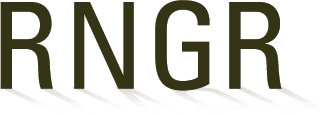
Ipomposis (spicata)
|
Hannah Demler Innovative Restoration Technician 258 Main St Suite 200 Lander, Wyoming 82520 hannah.demler@tnc.org |
| Family Scientific Name: | Polemoniaceae | ||
|---|---|---|---|
| Family Common Name: | Phlox family | ||
| Scientific Name: | Ipomposis spicata | ||
| Common Name: | Spiked ipomopsis | ||
| Species Code: | IPSP | ||
| Ecotype: | Fremont County, Wyoming | ||
| General Distribution: |
Ipomopsis spicata is found across much of the western United states from the western Great Plains to the Uintah Basin, south to New Mexico and north to Montana. |
||
| Propagation Goal: | Plants | ||
| Propagation Method: | Seed | ||
| Propagule Collection: |
Fruit is a loculicidal capsule. I. spicata seed is cream to tan in color. Seed is difficult to collect by hand because the capsules dehisce when seed is ripe. If the population is well monitored one can strip the flower heads when capsules begin to dehisce and recover some seed with thorough cleaning. Seeds mature uniformly on individual plants throughout late summer. Seed was stored in cloth bags at room temperature until cleaned and then vacuum sealed and placed in a freezer for storage. Seeds/lb for this ecotype was ~498,100 |
||
| Propagule Processing: | Seeds exhibit physiological dormancy (PD) | ||
| Pre-Planting Treatments: | In a germination trial, I. spicata seed that underwent no pre-treatment had only 1.3 % percent germination after a 28-day incubation under a diurnal temperature regime of 9/25 °C (corresponding to the average temperatures in Fremont County, WY in June). Four different cold stratification durations were tested, where seeds were incubated in sealed petri dishes on 0.7 % (w/v) agar at 3 ±2° C for 1, 2, 3, and 4 months prior to the germination trial. Average germination reached a high of 90.9 % after the 4-month cold stratification treatment, and both the 3- and 4- month cold stratification treatment led to germination > 75%. We also included a gibberellic acid (GA3) treatment on un-stratified seeds to test chemically-induced dormancy relief compared to cold stratification. 1mM GA3 was added into the 0.7% (w/v) agar and average germination after 28 days at 9/25 ° C was 11.9 %. The GA3 treatment did lead to greater germination than the control and 1- month cold stratification treatment, but the poor germination of the GA3 treated seeds indicates that under these conditions and at the concentration tested, it is not an effective means of dormancy relief for I. spicata. | ||
Citation:
2023. Propagation protocol for production of Ipomposis spicata Plants Lander, Wyoming. In: Native Plant Network. URL: https://NativePlantNetwork.org (accessed 2025/09/18). US Department of Agriculture, Forest Service, National Center for Reforestation, Nurseries, and Genetic Resources.



